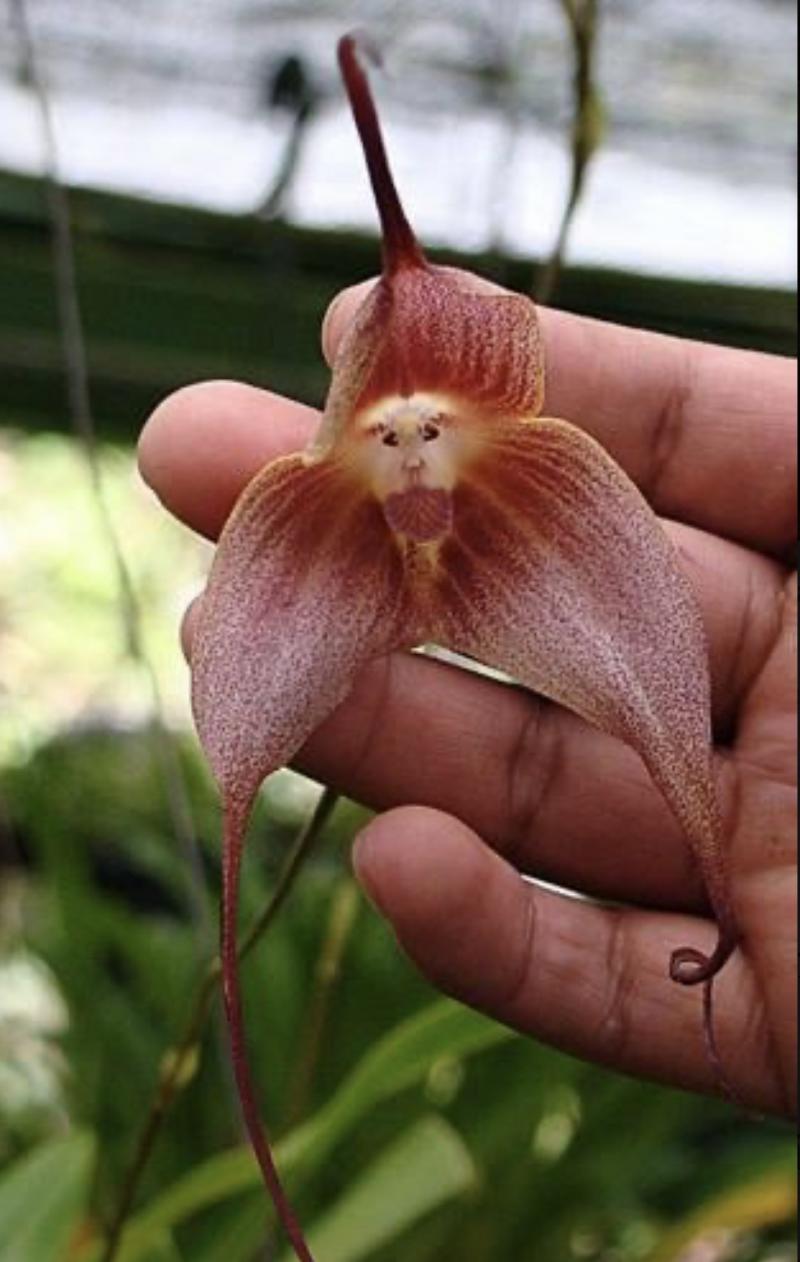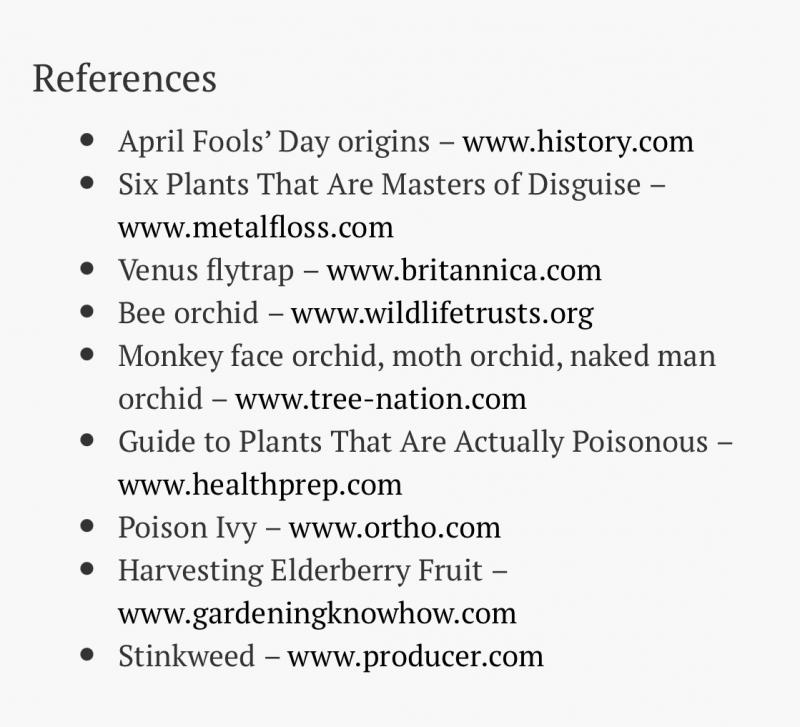 Victoria County Master Gardener Association
Victoria County Master Gardener Association
ph: 361-935-1556
nancyk
2022 Apr 01

PHOTO BY WIKIMEDIA COMMONS
Elderberry (Sambucol) berries and leaves are full of antioxidants and help boost your immune system. However, unless the berries are completely ripe and consumed in moderation, they can cause kidney stones.
SURPRISING PLANTS:
Fooling around with foliage
April 1, 2022
by Phyllis Elmore/Victoria County Master Gardener
Edited by Suzanne LaBrecque/Victoria County Master Gardener

Venus Flytrap

PHOTO BY WIKIMEDIA COMMONS
Monkey Face Orchid (Dracula simia)

PHOTO WIKIMEDIA COMMONS
Moth Orchid - Phalaenopsis ssp.

PHOTO WIKIMEDIA COMMONS
Poison ivy, poison oak, andn poison sumac look harmless. However, exposure to one of these can cause multiple health problems.

“April fools!”
You may be hearing these words today. Makes us wonder how this day originated. April 1 is a yearly custom for jokes and hoaxes. It can be April Fools’ or April Fool’s Day.
Historians believe this celebration is much older than we think. Some scholars think this day began in ancient Rome, linking it to the equinox festival of Hilaria. Others speculate that it began in France in the 1500s when the country moved from using the Julian calendar to the Gregorian calendar.
While April Fools’ Day is celebrated worldwide, it is only an official holiday in Odessa, Ukraine.
Usually, this day is marked by playing harmless jokes on oblivious individuals. Although the recipients might not consider it funny or harmless. With all this fun going on, be assured the plant world is part of the game. Many plants will “surprise” you.
One of the strangest plants is the Boquila trifolialata, known as pilpil in Chile. This plant grows vines that wrap around host plants mimicking its leaves. It can change both its shape and color. This phenomenon is known as mimetic polymorphism. (Try this one on someone today.)
Probably the most famous of plants in disguise is the Venus flytrap. This carnivorous plant catches insects and spiders with “trigger hairs” on its leaves. It is native to the wetlands of North Carolina and South Carolina. Currently it is under the Endangered Species Act.
The orchid family contains some masters of disguise. For example, the bee orchid looks like a female bee, thus enticing male bees to fly in and pollinate the flower.
Several other orchids look like animals. A few outrageous examples include the monkey face orchid (Dracula simia), the moth orchid (Phalenopsis blume) and even the naked man orchid (Orchis italica). Each orchid’s appearance serves a special purpose. The internet has additional unbelievable orchids.
Plants can trick you into believing they are harmless, when in fact touching them could lead you to the hospital. One is the castor oil plant (Ricinus communis). Its seeds contain ricin, which is very poisonous.
Almost everyone knows about poison ivy, poison oak and poison sumac. They do look harmless. However, exposure to one of these can cause multiple health problems.
The rhubarb plant can hurt you. The stems are harmless, but the leaves contain oxalic acid, which can lead to kidney stones.
Elderberry (Sambucol) berries and leaves are full of antioxidants and help boost your immune system. However, unless the berries are completely ripe and consumed in moderation, they can cause kidney stones.
Let us not forget mushrooms. Many types of mushrooms grow in the United States. Finding edible ones in nature is tricky. So, I will stick to buying my mushrooms at the market.
April Fools’ Day is about fun. What can you use from the garden to “fool” people? Of course, the gag with a bouquet of flowers that spray water has been around a long time and can seem trite in today’s world.
If you are ambitious, you can give your victim an arrangement that includes stinkweed (Thiaspi arvense). Also known as field pennygrass, it is a smelly lawn weed with an odor similar to rotten garlic with a hint of turnip. You can add small quantities to salads or soups. For a leaf, stinkweed is very rich in protein.
If you have grandkids or young children, you can tell them that you are going to grow doughnuts by planting Cheerios cereal. The same trick can be done with M&Ms or Skittles.
If you are creative and sneaky with plenty of time, you can plan and arrange a memorable April Fools’ Day. For me, I will plan on fooling around with my plants.
The Gardeners’ Dirt is written by members of the Victoria County Master Gardener Association, an educational outreach of Texas A&M AgriLife Extension – Victoria County. Mail your questions in care of the Advocate, P.O. Box 1518, Victoria, TX 77901; or vcmga@vicad.com, or comment on this column at VictoriaAdvocate.com.
ph: 361-935-1556
nancyk

